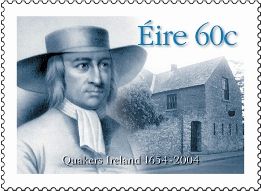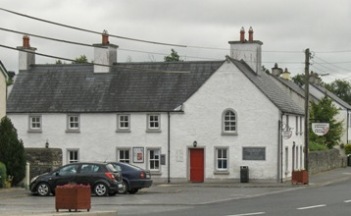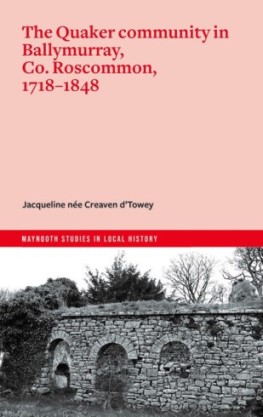- Home ›
- Irish church records ›
- Quakers
Irish Quakers: family history records
The Quakers of Ireland
have left wonderfully rich and complete records
Wonderfully rich and complete records!
In 2014, Irish Quakers celebrated the 360th anniversary of the opening of their first Meeting House. This was in Lurgan, County Armagh, and it took place just one year after the first Quaker in Ireland, William Edmundson, had himself been converted to the principles of the Friends.

Edmundson has become known as the Father of Irish Quakers and it is largely due to his organisational efforts that today's genealogists have such rich pickings to discover.
Like all Quakers, the Friends of Ireland held both weekly and monthly meetings; births, marriages and deaths were systematically reported at the monthly meetings.
Much to the delight of Quaker genealogy researchers, the majority of these records go back to 1655 or the 1670s, and most continue up to the present without a break.
They are not really like parish registers, though. The main business of the meetings was "to take care of the poor, the fatherless and the widows; to see that marriages were properly solemnised and to watch over the moral conduct of members." The entries do not, therefore, usually contain much more than the names and addresses of the parties concerned.
However, because all Irish Quakers' communities were self-contained, it is usually relatively easy to work out the family connections of the individuals named in the reports. I say 'usually' because some marriages attracted dozens of witnesses and the relationships can take some time to decipher.
Where to locate Irish Quaker records - Offline
It's an additional plus for genealogists that the records of this group are not split between countless repositories.
There are just two regional archives:
- The Dublin Friends Historical Library has records for Irish Quakers in the Republic of Ireland. Contact the Religious Society of Friends, Quaker House, Stocking Lane, Rathfarnham, Dublin 6.
- The Religious Society of Friends mainly has records for Northern Ireland. Contact at Lisburn Meeting House, Prospect House, 4 Magheralave Road, Lisburn, County Antrim.
In addition, both the National Library of Ireland in Dublin and PRONI in Belfast have some copies of these records. So, too, does the LDS Church (Mormons).
Links to these sites are in the Resource Box on the main Irish Church Records page, as is a lot of general information about using religious records for genealogical research.
Where to locate Irish Quaker records – Online
FindMyPast Ireland is, at January 2025, the only online source of Irish Quaker records.
The holding is extensive, and includes baptisms, marriages, some deaths, congregational (parish/social/family issues), migration and school records, plus a complete run of 65 editions of the Annual Monitor of the Quakers for Great Britain & Ireland from 1813-1918.
The latter holds obituaries for all dead Quakers. It’s a complete run from 1813-1918 with obituaries for all dead Quakers in Great Britain and Ireland.
There are 65 publications in total, broken up by years.
The Quaker community in Ballymurray, Co. Roscommon
Book Launch: ‘The Quaker community in Ballymurray, Co. Roscommon, 1718-1848’ by Jacqueline née Creaven d’Towey, was published by Four Courts Press in October 2024 as part of the highly regarded Maynooth Studies in Local History series.
The study charts the arrival of The Society of Friends to Co. Roscommon in 1717 and its relationship with the local landowners, the Croftons of Mote Park, and the challenges the families faced. The community was unique as the sole long-term pre-Famine Quaker group west of the Shannon. It survived until 1848.
ISBN: 978-1-80151-159-9. Paperback. 71pages. Illustrated. €12.95 + pp.
‘The Quaker community in Ballymurray, Co. Roscommon, 1718-1848’
Book Launch: ‘The Quaker community in Ballymurray, Co. Roscommon, 1718-1848’ by Jacqueline née Creaven d’Towey, was published by Four Courts Press in October 2024 as part of the highly regarded Maynooth Studies in Local History series.
The study charts the arrival of The Society of Friends to Co. Roscommon in 1717 and its relationship with the local landowners, the Croftons of Mote Park, and the challenges the families faced. The community was unique as the sole long-term pre-Famine Quaker group west of the Shannon. It survived until 1848.
ISBN: 978-1-80151-159-9. Paperback. 71pages. Illustrated. €12.95 + pp.
The Quaker village of Ballitore
Wool and floor mills were built to provide work, the rich farmland provided food, and a school was established in 1726 by Abraham Shakleton (an ancestor of the Antarctic explorer Ernest Shackleton).
 Ballitore Museum tells of Ireland's only planned Quaker settlement.
Ballitore Museum tells of Ireland's only planned Quaker settlement.Over the years the school gained such a reputation that even Protestant and Catholic parents sent their children to be educated there. Among its alumni was Edmund Burke, the famous political philosopher.
Today the little village still attracts those that want to learn about the Quakers in Ireland.
It has several restored historical buildings and a Quaker burial ground but the gem is its small museum, which contains many artefacts relating to local Quaker history.
The Quaker museum is free to visit and its opening times are:
All year: Tues-Sat, 12-5pm. June to Sept, Sunday 2-6pm. Tel: 00 353 (0)59 862 3344.Related Pages

